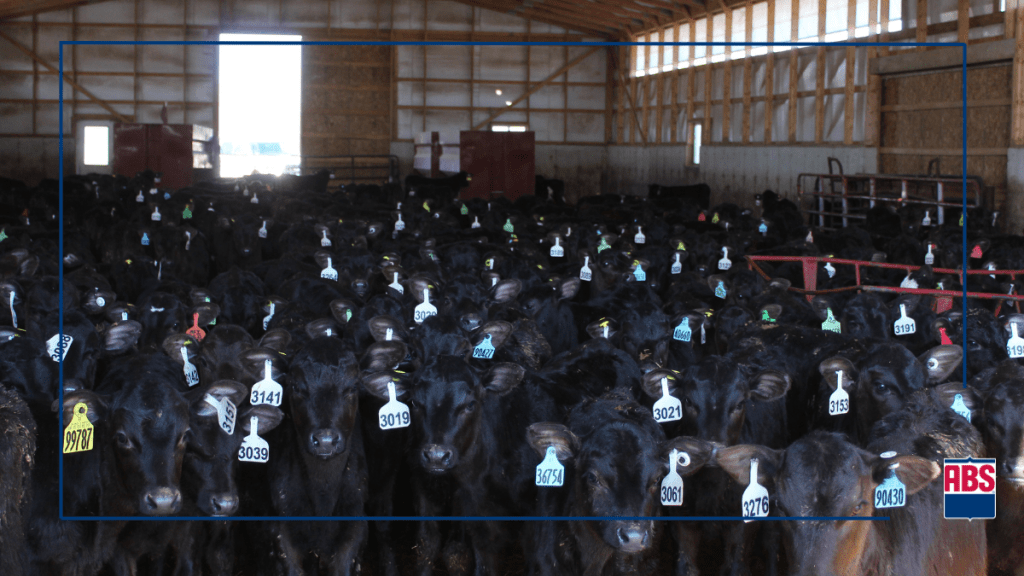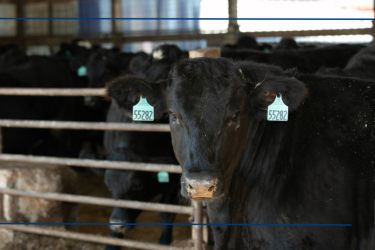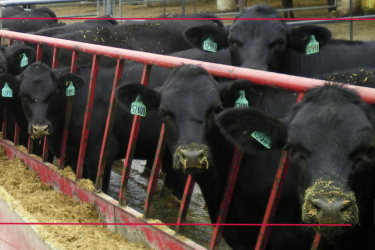Publish date: 7.8.24
In the evolving landscape of agriculture, dairy producers constantly seek ways to enhance profitability and sustainability. Today’s most common genetic management strategy is the integration of beef genetics within dairy operations. This approach, often referred to as beef on dairy, leverages the strengths of both sectors to create a profitable revenue stream for dairy producers. All of this is not new to most of you!
A beef on dairy strategy allows you to diversify your income streams, use resources better, and improve farm efficiency and profitability. Using just any ole beef bull could actually cost you money instead of adding profit through beef on dairy. The key to a successful beef on dairy program is utilizing the right beef genetics validated for dairy performance and intended for beef supply chain marketability.
From conception to consumption, Beef InFocus is the must-use beef on dairy program because it is designed to maximize beef supply chain profitability and is proven to maintain your dairy’s reproductive performance. We are the only genetic supplier that is using proprietary indexes—NuEra Profit Index and Beef Advantage Index—to measure and validate our beef sires’ predicted performance. Here’s why you can trust them to boost the success of your beef on dairy program.
NuEra Profit Index: Choosing Genetics for Beef Profitability
Beef InFocus is powered by our exclusive terminal beef genetic line, NuEra Genetics. To increase profitability through precise genetic selection, NuEra is comprised of a SimAngus hybrid line designed as an ideal terminal solution that maximizes productivity, efficiency, and sustainability while complementing the dairy cow.
Our NuEra Profit Index (NPI) assists our team of geneticists in selecting genetics for beef supply chain profitability and making breeding decisions within our genetic nucleus herd. We work closely with stakeholders in the chain to understand their key profit drivers. Growth traits, carcass traits, and feed efficiency are the categories that most positively impact profitability from post-weaning to finish in the beef supply chain. Thus, they are the base of what NPI is comprised of.
We create thousands of embryos each year from our NuEra elite female donor nucleus which leads to thousands of beef bulls being created from designed matings. These top resulting animals go through rigorous performance testing in which all are genotyped and growth rate, feed efficiency, and body composition are measured. We include both males and females we create as we strive to speed up the rate of genetic progress with each generation.
Once data capture is complete, all animals are run through our proprietary genetic evaluation. Bulls are culled for structural soundness, temperament, and reproductive requirements at this point. After clearing these qualifications, bulls are evaluated by our geneticists and ranked on our proprietary genomically enhanced terminal beef trait index: NuEra Profit Index.
Only the most superior sires go on to further testing to be considered for Beef InFocus which equates to only the bulls in the top 10% of our Genetic Nucleus herd for NPI. This is really step one to ensuring only the best of the best make it to the beef supply chain—what is being demanded and where ABS drives value. The thing about other programs is the absence of support in selecting the right beef genetics that will work in a dairy. That’s the power of Beef InFocus. We take care of finding the right genetics, so you don’t have to.
Beef Advantage Index
Once sires meet the criteria for NPI, they are further evaluated for fertility and calving—the traits that matter most to dairy producers. Our Beef Advantage Index validates the sires’ performance in those two categories with real on-farm data. We capture observations of performance for gestation length, calving difficulty, stillbirth, and conception rate as they impact a dairy’s reproductive success.
Using just any ole beef bull could actually cost you money as opposed to adding profit through beef on dairy. Before any sire makes it to our lineup, we measure their predicted performance compared to more than 5.5 million fertility records on over 1,100 farms and 1.5 million calving events to ensure they meet our program thresholds.
Once again, our sires enter an intense validation process to ensure we are delivering value to your dairy. After passing the thresholds for NPI, they will enter the ABS facilities to begin the collection process. They must pass all semen production requirements before they can move on to further testing through our Beef InFocus Cornerstone program. This program includes dairy cooperator herds that allow us to test our sires within their dairies to evaluate the bull’s fertility and calving performance. Any bulls that don’t meet our threshold for fertility or calving traits are culled.
So how does the Beef Advantage Index work? It starts with an ABS evaluation that assesses a sire’s performance in those above-mentioned fertility and calving traits. Then, the index weighs those traits individually based on their potential profit impact for a point gained or lost on a dairy. Our Beef InFocus lineup only includes the best of the best in beef genetics that are proven to perform in your dairy.
Beef InFocus is bred by design, validated by data, and driven by results. It is the ONLY BEEF ON DAIRY PROGRAM that tests and hand-picks bulls based on dairy performance and beef supply chain profitability. This blog demonstrated how each sire is validated based on observations to assure consistent performance for you. As the premier beef on dairy program, we continue to work towards designing a product that delivers profitability to your dairy and across the beef supply chain through the creation of the best beef cross calves.
Fill out the form below or contact your ABS Genetic Advisor to start using Beef InFocus to produce more valuable beef cross calves.



